The "Devil's Tines"...!
The Devil is in the Details, God is in the Details, the Story is in the Details, the Details are...objects, psychology and an emotional arc.
I spied a fork half buried in the dirt.
Then I saw another one, less than a foot away from the first.
Does this look like a tiny hand, climbing from an unmarked grave, struggling to break through earth, debris and the great injustices of the universe?
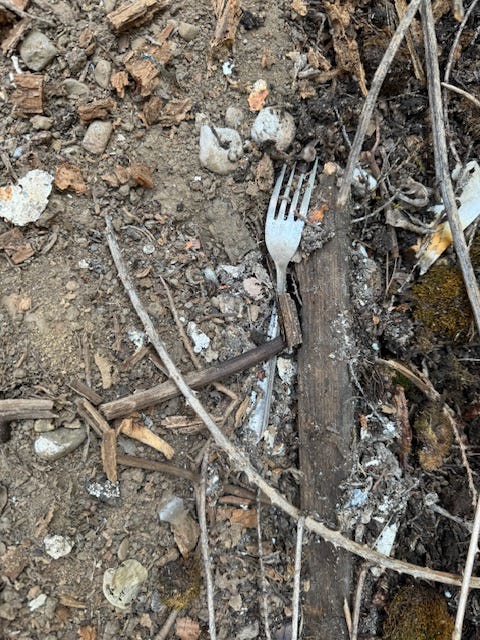
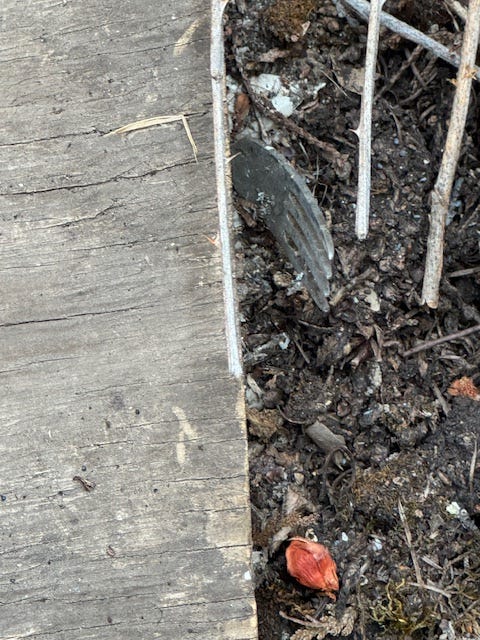
Ages back, I bought The Hour of the Witch, by Chris Bohjalian, in the Portland airport, hoping for a page-turner to hold my interest through a long flight. Witches! Court trials! Old fashioned divorce cases! Puritans! Sounds awesome, right?
Bohjalian writes best-sellers. This one is historical fiction with era-specific details delivered in a way that resonates against current events to highlight entrenched power trips, including questions of money, gender, marriage, who has the privilege of being believed, who is allowed to control the meta stories that define lives and economics, who plays the part of upright hero (regardless of truth), and which bodies are used as scapegoats, objects, possessions, labor and tools.
Set in Puritan times, of course there’s paranoia, Wiccaphobia, power struggles, verbal and physical abuse, contempt, panic, violence posed as righteous “discipline” and the rest of the major dysfunction. White guys rule, retribution and terror are dealt out in the name of God’s hand, aging single women armed with the essential medical knowledge of the times are particularly suspect, and everyone other than the guys at the top can suck it. It’s colonization.
And in that mix, a particular kind of three-tined fork emerges to walk the novel forward.
Before the story begins, the protagonist has married and moved into the home of a bitter, violent, highly regarded Puritan in a Puritan colony, her husband. Life is dark and crummy. Their indentured servant’s brother is dying and hasn’t yet paid off his own servitude in another house, so he’s a bad investment—their lives are built around that level of bleakness. The protagonist’s parents are more generous than her husband, showing that it could be so much better. As merchants, through their importing business, they introduce forks to the household, bringing the utensils over from England. Forks!
Seems innocent enough, right? It’s silverware! It’s a gift.
Forks are so new, they teach each other how to hold them, making the familiar unfamiliar—
Soon after, a pair of forks are found where they’ve been buried in the ground…and the mystery begins…
The forks offer context and foreshadowing….
The forks become a vehicle for so many dynamics in the novel: the protagonist’s husband uses them for violence, she files for divorce, and all too soon, of course, she’s on trial for witchcraft because…there were forks! In her yard! In her house!
Big questions: who planted the forks? Who planted the Devil’s welcome mat of three tines in her New England yard? Are forks the reason she can’t conceive a child? Is she a witch? Does she consort with witches? The plot circles around absurd (but believable, given the whole human aspect) questions of forks, alongside household labor, broken bones and the court system.
Lately, I’ve been putting on leather gloves and a mask as I work, alongside my brother, to clear out an old shed.
It would be easy to feel the shed is haunted, if I wanted to imagine such a thing. The ground is strewn with objects that were once prized and are now broken or molding.
What interests me is how, when I saw forks in the dirt, Bohjalian’s novel came back to me. He wrote in such a way as to effectively own the image of dismal forks buried in the earth, and with that ordinary object, his work is alive...
These real-world forks— (basic equation: empty household + time and disuse = trash) —are creepier now than they might have otherwise seemed, and symbolically richer too, more metaphoric, more meaningful, evocative, worth noting, worth pointing out. “A fork!” I actually shouted it. “The Devil’s tines!”
These forks seem to live, now, at the twisted corners of an unexamined human failing, lost in imaginary but all too real hierarchies and violence.
Bohjalian has said that he used the documents of an actual Puritan divorce court trial, coupled with witch trial documents, and merged the two.
Consider the objects in your own work. Can an object have its own narrative arc, moving through meaning, building forward propulsion?
Cheers,
M





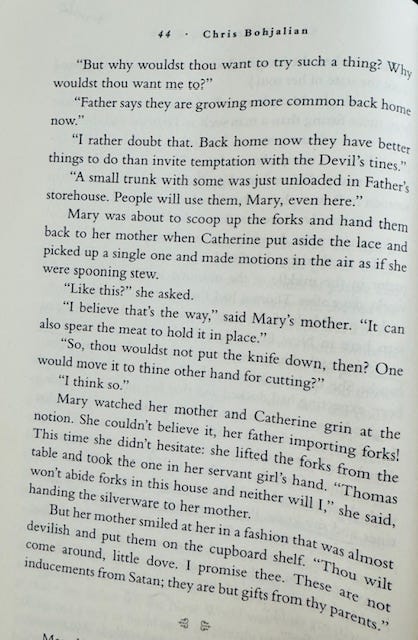
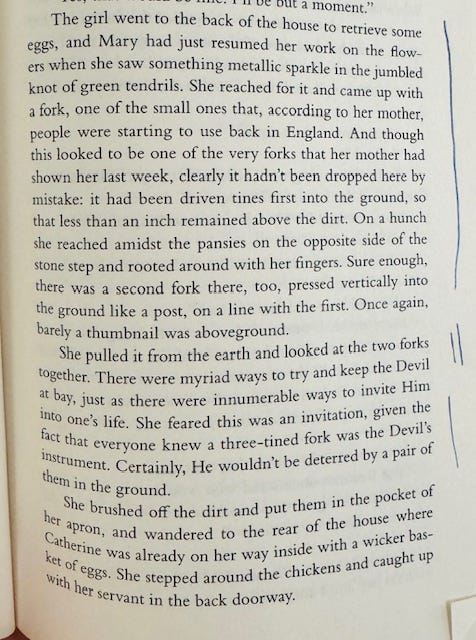
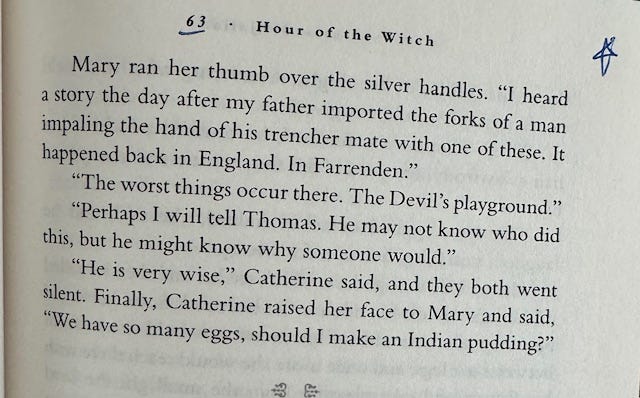
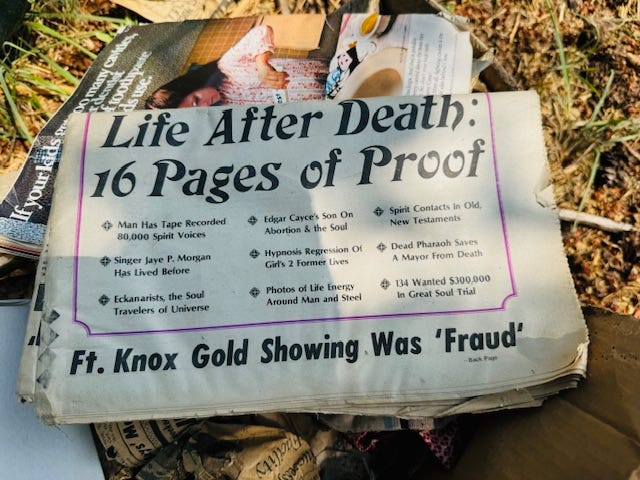


My grandmother saw warnings foretold in dropped silverware. A fork dropped, meant be on guard from the direction the tines were pointing. It may be bad news.
I love this. I miss a good structural analysis.